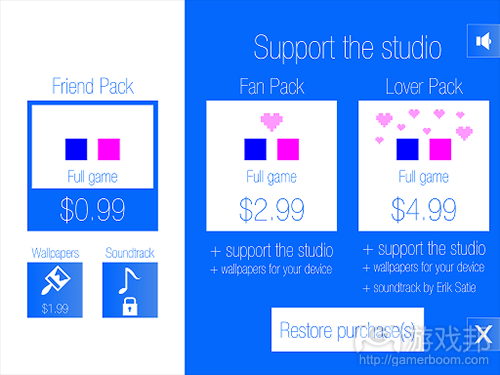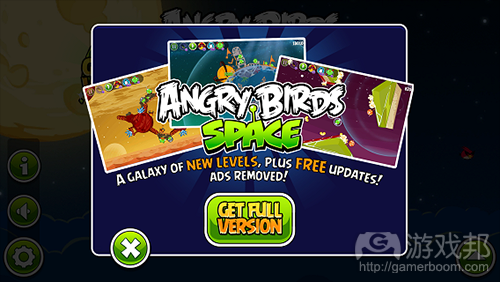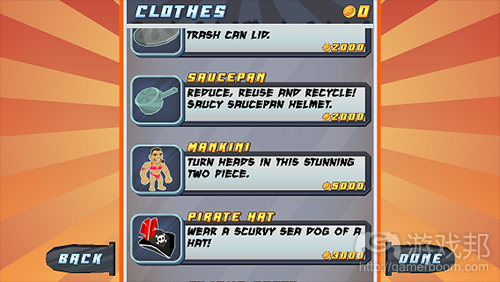解析游戏中的4种主要微交易类型
作者:Simon Lachance
今天我想概括4种不同的微交易类型,以便开发者了解如何优化使用这种商业模式。
*“索取小费”方法
这相当于街头艺人表演结束后伸出帽子向路人索要小费。我们很确信没有人会对这种类型的微交易感到愤怒,但它也的确并不是一种有效的盈利方法。不要寄希望于用这种方法创收,看看《Space Team》这款游戏的收益数据就知道了。但其开发者Henry在博文中也表示,自己并不是为了赚钱,而是为了让人们认识自己才制作了这款游戏。在游戏载誉无数,赢得将近200万次下载量的情况下,可以说他的确成功了!
一个有趣的方法是Bari Silvestre对《Pretentious》这款游戏的做法,他使用了优秀的旧样本->完整游戏的方法。但你想完成购买交易时,你可以选择以一美元购买游戏,或者捐更多钱来支持这家工作室(上限为5美元)。Bari声称单单是这一做法就让自己多得了30%的收益。为什么?区别就在于在Bari的这款游戏中,你的大脑会立即同意为整款游戏付费。如果他请求你再多给点钱,那又何妨再多给他两美元呢?
我们可以用Dan Ariely著名的巧克力试验来解释这其中的区别:
在他的一个试验中,Ariely在一个交通繁华地道设置了一个摊位,向路人兜售巧克力:
Hershey’s Kisses巧克力每块0.01美元,Lindt Truffles每块0.15美元。大部分人对此都会选择Truffles。从两种商品的质量差异和售价来看,这是一笔划算的交易。Ariely过后又设置了另一个摊位,提供相同的两种选择,但两者售价都降低了1%,令Kisses免费,Truffles售价降为0.14美元。此时大部分人都选择了Kisses而非Truffles。
一般来说,只要你的大脑同意掏钱了,就更容易接受1美元和5美元之间的售价差别了。
*样本->完整版
如果你选择这条路径,最需要回答的一个大问题就是“样本应该在哪中止内容?”你必须在玩家想要得更多时削减体验,同时又不能激怒玩家,这可真是个复杂的挑战,它可不像看起来那么简单。《Gasketball》就实行了这种样本->完整版方法,但不幸的是没有获得成功。“《Gasketball》在头几周的表现逊于《Solipskier》,仅有0.67%的人最终购买了游戏。”
如果你在样本中添加了过多内容,人们就不会再去购买完整版本。这正是我们的游戏《Deep Sea Mahjong》所遭遇的情况。我们收获了很好的评价,玩家平均开启游戏25次,但他们只是体验了日常谜题就离开了。他们在免费版本中已经玩够本了,为何还要购买完整版呢?
如果你无法找到划分游戏的好方法,那还是为整款游戏标价吧,甚至都不需要发布样本。如果你没有发布样本,可能是一个更好的解决方法!
原因如下:
1.你的投入会更少。要知道制作、发布和维护样本是需要成本的。如果你支持多个目标平台,情况还会更复杂,这需要投入大量时间和金钱。
2.在移动平台上,你无需与大型公司竞争。当前手机游戏的趋势就是免费模式。许多大公司都在投入大笔预算推广这些免费游戏,而你跻身“付费游戏”版块则意味着你无需与这些财力雄厚的公司争夺曝光度。
3.样本可能影响你的销量。据Jesse Schell所称,“发布一个游戏样本可能让你的销量减半”。
*扩展/额外内容/更多关卡
它本质上与“样本->完整版”途径相似,主要区别就在于游戏针对更新而设计,未来还会有更多内容。
当我开始撰写这篇文章时,我发现有更多游戏在分段出售内容包(例如关卡内容包1:0.99美元,关卡内容包2:0.99美元)。但我也持续看到一些游戏要求玩家一次性付费解琐所有关卡和未来关卡。作为玩家,我更欣赏这种方法,你只需付费一次就能获得当前的一切以及尚未发布的内容。而作为开发者,我却不知道每关卡收费0.99美元或针对所有关卡收费2.99美元之间有何区别。
虽然我自己从来没有试过这种模式,但我做了一些调查发现针对主要基于故事的游戏而言,开发者更倾向于针对每个章节收费。《PPhoenix Wright》、《Ghost Tricks》、《Final Fantasy Dimensions》等游戏就属于这种典型。如果游戏故事元素较少,例如谜题游戏或升级游戏,开发者一般就会针对一切内容和未来更新内容一次性收费。
但如果人们只是一次性消费,制作新关卡和更表内容并不会给你带来更多收益,不是吗?
你错了。
你发布的每个更新内容,都可以提升游戏的曝光度,扩大你的用户基础。你将获得媒体曝光度,以及潜在的推荐位置。你将让自己的游戏获得新生,并且可以时常进行更新。
*角色定制
对于单人模式游戏而言,这个方法并不管用。购买定制内容的要点就在于向人们展示,炫耀这些东西。这好比是珠宝,如果你无法向任何人展示它,那么它就是一无是处了。而对于多人游戏而言,这种定制内容却甚为管用,并且甚至根本不会影响游戏设计。像《Path Of Exile》这种游戏就巧妙地使用了这一概念,并且单凭这些定制内容就能令开发团队自给自足了。
这里需要记住的一点是,你出售的是声誉和尊重,而不仅仅是皮肤和服装。
如果你开发的是单人模式游戏,你可以出售的就是笑话了。正如《Major Mayhem》中的Mankini一样,你并非出售荣誉,而是出售好奇心。“它最终会是什么模样呢?”
(本文为游戏邦/gamerboom.com编译,拒绝任何不保留版权的转载,如需转载请联系:游戏邦)
4 type of MicroTransactions dissected.
by Simon Lachance
In my last post I wrote about 3 rules for Freemium game devs. Today I’d like to go over a couple of different types of MicroTransactions and get into the business side; to give some insights on how to optimize it or when you should use it.
The Tip Jar Approach
It’s the equivalent of the street performer passing the hat after a good show. While you are sure nobody will be angry by this type of MicroTransactions, it’s not really effective as a revenue. Don’t rely on this to pay your bills, just take a look at the numbers for the massive hit Space Team (http://www.sleepingbeastgames.com/spaceteam/Numbers/). However, Henry wrote on his blog (http://www.sleepingbeastgames.com/blog/spaceteam-retrospective/) that he did not made this game for money but made it to put his name on the radar. After multiple awards, and nearly 2 million downloads I think it’s safe to say he succeeded ![]() ! Congrats Henry!
! Congrats Henry!
One interesting approach is the one Bari Silvestre did for Pretentious game. The game uses the good old Demo -> Full game approach, but when you are about to complete the purchase, you have the option to either buy the game for a dollar or give a little more and support the studio (up to $5). Bari claims that simply doing this got him 30% more revenue. Why? The difference is that in Bari’s game, your brain already agreed to pay for the whole game. When he asks for a little more, then what’s another $2 to support the guy?
The big difference can be explained with the famous chocolate experiment by Dan Ariely :
In one of his experiments, Ariely set up a booth in a well-trafficked area. Passersby could purchase chocolates :
Hershey’s Kisses for $0.01 a piece or Lindt Truffles for $0.15 each. The majority of people who faced this offer chose the truffles. It was a fine deal considering the quality differences and the normal prices of both items. Ariely then set up another booth with the same two choices but lowered the price by one cent each, thus making the kisses free and the truffles cost $0.14 each.
This time, the vast majority of people selected the kisses instead of the truffles.
- Extract from Predictably Irrational : http://www.amazon.com/Predictably-Irrational-Revised-Expanded-Edition/dp/0061353248
Basically, once your brain agrees to open your wallet, the price difference between $1 and $5 is much easier to accept.
- Demo -> Full :
If you go down that road, the biggest question you’ll have to answer is “Where do I end the demo?”. You need to cut the experience when the player wants more, without pissing him off, that’s a really complicated challenge right there; It’s not as easy as it seems. Gasketball did the demo -> full approach, but unfortunately didn’t paid off: “Gasketball has succeeded well below what Solipskier did in it’s first few weeks. Only 0.67%.people buy the game in the end. ”
http://www.penny-arcade.com/report/article/going-broke-with-success-how-an-app-with-200000-downloads-led-to-devel
http://www.hookshotinc.com/interview-600k-downloads-but-gasketball-still-feels-like-a-dud/
If you put too much content in your demo, people won’t bother buying the full version. That’s what happened to us with Deep Sea Mahjong. We got great reviews, players opened the game 25 times in average, but they just played the Daily puzzle and left. They had enough with the free version, why would they buy the full version ?
If you can’t find a nice way to split your game, just put a price on the whole thing and don’t even release a demo. And you know what, if you don’t release a demo, if might even a better solution!
Because :
You’ll spend less. You have to make the demo, release and maintain it. Multiply the whole thing by the amount of targeted platforms. Lots of time and money spent.
On mobile, you won’t compete against the big guys. The current trend in mobile gaming is on the Free to Play model. As all the big budgets are being spent to promote these free games, being put in the “Paid Games” section means you won’t have to compete against their deep pockets for exposure.
A demo can be harmful to your sales. According to Jesse Schell, “releasing a game demo can cut your sales in half”. Go watch his video for more details on this (http://ca.ign.com/articles/2013/02/11/jesse-schell-releasing-a-game-demo-can-cut-sales-in-half)
- Expansion/ Additional content/More levels:
It’s essentially the same as the “demo-> full” route, the main difference is the game is designed to be updated, to have more content in the future. You know, when you see an interface like this:
When I started writing this article, I was under the impression that more game were selling single-shot sets of levels out there (Level Pack 1: $0.99, Level Pack 2: $0.99, etc.). But I keep seeing games that are asking for a one-time purchase to unlock all levels AND future levels. As a player, I much prefer that approach, you pay one time and that’s it; you get everything plus what’s not even released yet. As a developer though, I’m wondering what’s the difference between charging $0.99 per level, or charge $2.99 for all levels.
While I never experimented with that model myself, I did some research and what I found out is that for heavy-story based game, developers tend to charge per episodes. Games like Phoenix Wright, Ghost Tricks, Final Fantasy Dimensions, The wolf among us, Back to the future, etc. If the game has little to no story, like a puzzle game or an upgrade game, developers tend to charge once for everything AND future updates.
But hang on, if people only have to pay once, making new levels and updates won’t give you more money right?
WRONG.
For every update you release, you’ll get a boost in exposure, increasing your user base. You’ll get media exposure, and a possible feature spot. You’ll give a new life to your game and you can do that as often as you like. Updates, updates, updates. Developers of Badlands shared the impact of making updates at the last GDC: http://www.gdcvault.com/play/1020132/BADLAND-Postmortem-Building-on-App
- Character Customization :
For single player games, that doesn’t really work. The whole point of buying cosmetic changes is to show it to people, to brag about it, to be proud of it. It’s the equivalent of jewelry. If you can’t show it to anybody, it’s pretty much useless. In multiplayer games on the other hand, that stuff works a lot and won’t even change the game’s design at all. Games like Path Of Exile use that concept masterfully and are able to fund their development team solely from these cosmetic purchases.
http://www.gamasutra.com/view/news/211929/The_mechanics_and_ethics_of_freetoplay_in_Path_of_Exile.php
The thing to remember here is you don’t sell skins and costume, you sell reputation. You sell respect.
If you’re working on a single player game, one thing you can do is to sell jokes. Just like the Mankini in Major Mayhem. In that case, you’re not selling reputation, you’re selling curiosity. “What the hell will it look like?”(source:gamasutra)
上一篇:分享处理音频谜题设计的方法












































 闽公网安备35020302001549号
闽公网安备35020302001549号